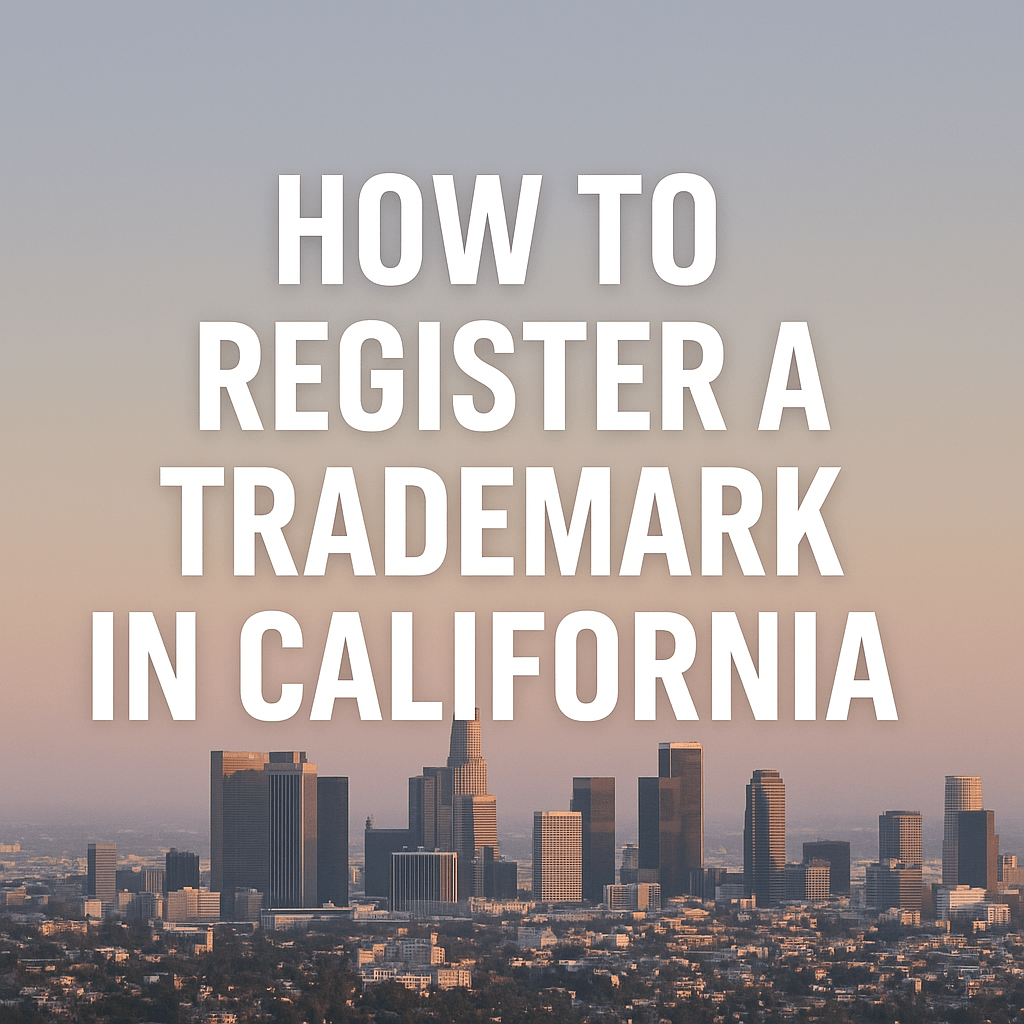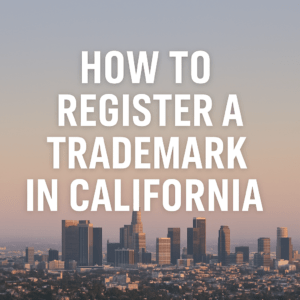Across California’s leading startup sectors, including tech, SaaS, ecommerce, digital media, and entertainment, the brand usually becomes the first asset noticed and valued by the market.
Customers discover a startup through its name and platform identity long before evaluating the underlying technology. Investors also review whether the brand is secured and enforceable before approving funding.
Trademark protection, therefore, becomes a key part of a startup’s commercial strategy. Understanding how to register a trademark in California and federally determines whether a brand scales with the company or becomes a liability that delays growth.
This guide provides a clear legal strategy for founders who want to convert their branding and market presence into defensible intellectual property rights.
Why California Startups Need a Trademark Strategy?
A trademark only becomes a business asset when the company can prevent others from using a similar name. Without that legal exclusivity, competitors can adopt confusingly similar branding and siphon attention, traffic, and goodwill in the market.
Trademark registration supports:
- Competitive differentiation in crowded industries
- Investor due diligence and valuation
- Licensing opportunities and partnership leverage
- Reduced risk of forced rebranding during expansion
- Stronger enforcement and public rights notice
In California’s startup ecosystem, the companies that secure their brand identity early position themselves for faster scaling and stronger commercial leverage.
California Trademark Registration Adds Early Protection
A California state trademark gives exclusive rights within California’s borders. State registration through the Secretary of State is strategically useful when:
- The business operates only within California
- A product belongs to a restricted industry, such as cannabis
- Founders need fast confirmation of rights during launch
- IP investment is phased based on budget and growth milestones
California is itself a major market with global influence. Local protection helps founders prevent early brand confusion while preparing for national expansion.
State registration is often the first layer of protection rather than the final one.
Federal Trademark Registration Drives National Commercial Growth
Most California companies begin operating across state lines from the moment they allow customers to create accounts, subscribe, or purchase online.
This usually satisfies the USPTO’s interstate commerce requirement early, which means federal trademark filing should start earlier than many founders assume.
Federal trademark registration provides:
- Exclusive rights throughout the United States
- Stronger positioning in enforcement actions and marketplace monitoring
- Use of the registered trademark symbol, which deters infringement
- Ability to record with U.S. Customs to block infringing imports
- Recognized IP value in investment and M&A transactions
Founders planning to scale into national distribution or digital commerce should treat federal registration as a core business milestone.
If your startup is preparing to launch, attract investors, or scale online, securing trademark protection early can prevent costly disputes later.
Schedule your confidential consultation with L.A. Tech and Media Law Firm or use our secure contact form to discuss a proactive trademark strategy that aligns with your growth plan.
How to Register a Trademark in California
Trademark rights begin with actual commercial use. Filing is a legal step, but brand strength comes from how the mark functions in market activity.
Step 1: Confirm Distinctiveness
Brand strength depends on where a mark falls on the distinctiveness spectrum.
Stronger marks:
- Fanciful terms created for branding
- Arbitrary words are used, unrelated to their meaning
- Suggestive branding that hints at a benefit
Weaker marks:
4. Descriptive terms that require imagination to protect
5. Generic names that cannot be protected at all
Choosing the right brand name can enhance protection and reduce future legal conflict.
Step 2: Search for Trademark Conflicts
Clearance requires searching:
- California Secretary of State trademark records
- USPTO TESS database
- Social media handles and domain registrations
- App stores, streaming listings, and ecommerce products
- Existing use in the marketplace that may create common law rights
Skipping this step risks lawsuits, rejection, and forced rebranding later.
Step 3: File California Trademark Application Form TM 100
The application includes:
- Owner’s legal identity
- Drawing page of the mark
- Specimens showing the mark in commercial use inside California
- Goods and services classification
- Required government filing fees
The submission can be done online or by mail. Founders should retain proof of first use dates.
Step 4: Monitor Publication and Examiner Review
The mark is published in the California Trademark Bulletin. Competitors may oppose if they believe confusion will occur. A timely legal response is necessary.
Step 5: Maintain Active Use and Renew
California trademark rights remain valid for five years and can be renewed indefinitely as long as commercial use continues.
 Common Law Trademark Rights in California
Common Law Trademark Rights in California
Trademark rights arise automatically when a brand is used commercially, even without registration. These are called common law rights. They are real but limited:
- They generally apply only where the brand is known
- They are harder to enforce in disputes
- They do not appear in USPTO searches
- They rarely satisfy investor requirements
- They can be overridden by a federal registrant
Common law rights protect very early activity, but they cannot support scaling. Formal registration transforms a brand from a local reputation into a protected growth asset.
When Should California Startups File Federally?
Federal trademark registration should begin as soon as:
- Customers or viewers exist outside California
- A product is sold online
- A distinctive brand identity is launched publicly
- Investors request IP documentation
- Competitors start using similar branding
A federal filing date establishes priority in the nationwide market. The earlier the filing, the stronger the company’s enforcement position.
Can a California and Federal Trademark Be Filed Together?
Yes. A coordinated filing plan can support growth more efficiently than filing one route at a time.
Two common strategies:
Parallel filing
Both filings occur at the same time to protect immediate local use while reserving national rights.
Phased filing
California first secured early rights and then federal when the company expanded into interstate commerce.
The best path depends on how fast the company is scaling and where commercial activity occurs.
How Long Does Trademark Registration Take?
Timelines vary:
- California: often weeks to a few months
- Federal USPTO: typically 12 to 18 months or more
Although federal certification takes longer, legal benefits begin when the application is filed. This includes deterrence, public notice, and priority rights in disputes.
Enforcement is Part of Brand Stewardship
Registration alone does not prevent infringement. Enforcement preserves value.
California startups should implement:
- Monitoring of USPTO and California filings
- Ongoing marketplace review for similar branding
- Cease communications before confusion spreads
- Updated specimens that reflect product changes
- Documentation of consistent commercial use
Delay can weaken rights and strengthen competitor claims.
Trademark Strategy for California Tech and Media Founders
California founders frequently scale into adjacent markets faster than planned. Branding decisions made in the first ninety days can influence:
- Product line expansion
- Entertainment or content licensing deals
- International distribution
- Mergers and acquisitions
- App store and platform positioning
Planning trademark classes and future offerings early protects expansion before it happens. A strong trademark roadmap supports revenue growth, investor expectations, and brand security.
Trademark Registration is a Growth Infrastructure Decision
Trademark strategy should align with:
- Market launch timing
- Brand recognition goals
- Capital raise milestones
- Strategic partnerships and platform deals
Companies that protect their brand identity while growing minimize disruption and maximize leverage at every stage of scale.
Protect the Brand That Protects the Business
A trademark is more than a corporate label. It is a core asset that influences valuation, customer trust, and competitive advantage. California startups that secure early trademark protection build a more resilient commercial structure.
The companies that own their brand legally control the value that the brand creates.
David Nima Sharifi, Esq., founder of the L.A. Tech and Media Law Firm, is a nationally recognized IP and technology attorney with decades of experience in M&A transactions, startup structuring, and high-stakes intellectual property protection, focused on digital assets and tech innovation. Quoted in the Wall Street Journal and recognized among the Top 30 New Media and E-Commerce Attorneys by the Los Angeles Business Journal, David regularly advises founders, investors, and acquirers on the legal infrastructure of innovation.
Schedule your confidential consultation now by visiting L.A. Tech and Media Law Firm or using our secure contact form.



